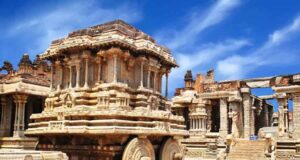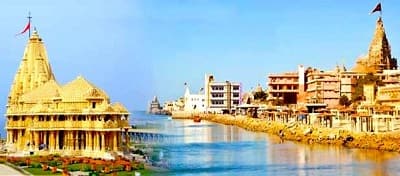Top 12 Best Places to Visit in Gwalior (2023)
Gwalior is a modern city and is situated in the state of Madhya Pradesh in India. It is located at a distance of around seventy-six miles from the south of Agra City and boasts of an intense ancient and diachronic heritage.
It is one of the finest among the many other tourist destinations in India and is accountable for attracting a vast number of tourists and travelers from all across the globe.
This is one of the towns in the nation that has witnessed many significant historical events. Gwalior, over the last many years, had served as the place of origin of glorious and mighty kinfolks and families.
This city is house to rich social and ethnical customs and practices that are interlinked into the substance of contemporary life. The various interesting and riveting tourist places in Gwalior are mentioned and described here.
Gwalior Fort
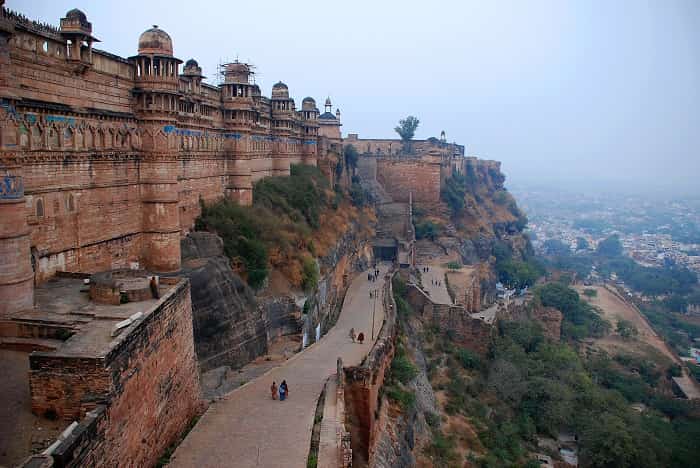
Founded by Raja Suraj Sen under the administration and supervision of Sage Gwalipa more than one thousand years ago, the Gwalior Fort lies on a hill by the side of a pool.
The water of this pool is believed and said to have cured the Raja’s leprosy and has other medicinal and curative properties. The length of the external wall of this fort is about three point two kilometers and the height of the same is thirty-five meters.
The route that precedes the fort is quite abrupt and vertical in nature and has various attractively chopped statues resembling the era of the Jains.
The fort blooms with and is stored with other ancient and historical sculptures and is visited by thousands of travelers and tourists all around the year. It was built in two portions and is distributed over a land area of three square kilometres.
The fort was built at an altitude of hundred metres higher up the city and is encircled by walls made up of arenaceous stones and rocks. The fort is also house to six palaces, three temples and several water tanks.
It remains open for the tourists and public from nine-thirty in the mornings to five-thirty in the evenings.
Admission charges are five rupees per head for Indians, free for children below fifteen years and hundred rupees per head for foreigners.
Man Mandir Palace
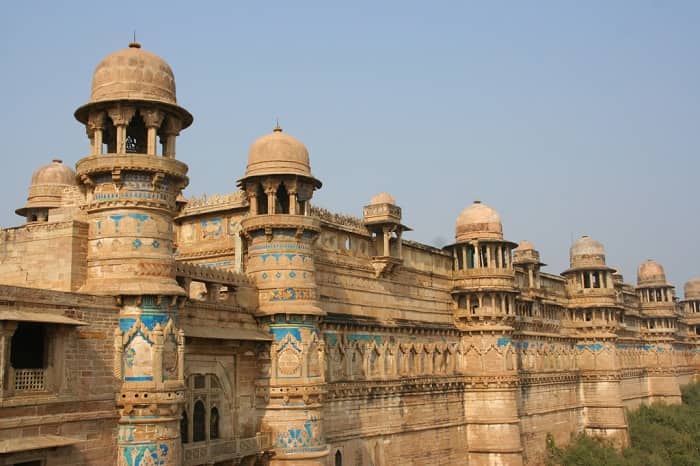
The Man Mandir Palace was built by Man Singh Tomar between 1486 and 1517 and was dominated by many kings of the past. Some of the famous kings that ruled the fort are Qutb ud-din-Aibak, the Mughals and the Scindias.
The external structures of this palace were inspired from and designed as per the Hindu and ancient sculptures and are adorned with planned and nicely configured slabs. The palace’s enclosures are embossed and raised with properly chipped stone walls.
The internal structures of this palace are configured with colored drawings of animals, human figures, shiny and coated tiles, and flowers. This palace was built and designed in four horizontal surfaces, out of which two are located below the ground.
It rises up to a height of about eighty feet and has six rounded steeples and spires with furnaces. It is also house to a circular prison which saw the imprisonment and death of Mughal Emperor, Aurangzeb’s brother, Murad by the former. The Man Mandir Palace is truly a gift and asset of Gwalior.
Suraj Kund
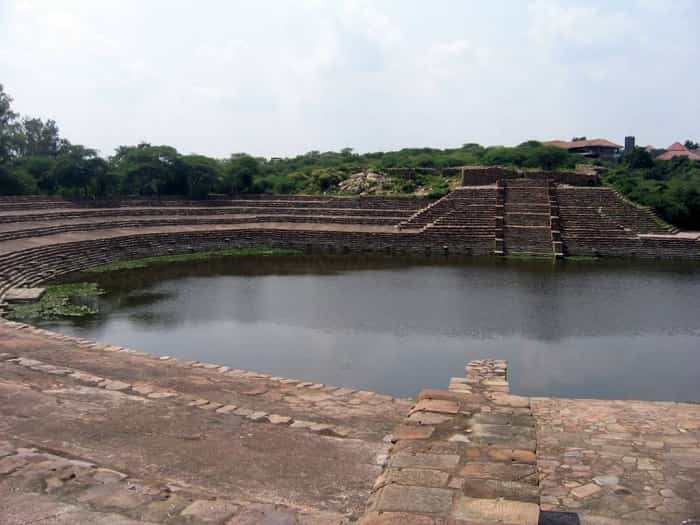
Suraj Kund is a water pool and is situated in the interiors of the Gwalior Fort. It was built in the fifteenth century, but its past is believed to go back to 425 AD.
As per true stories, during this period, it is believed that a ruler called Suraj Sen had gone into the forests for hunting and got lost. It was then that he was feeling thirsty and requested for some water from Sage Gwalipa to quench his thirst.
The sage used to live in the forests and requested the ruler to ascend a hill for water. The water of this site and now, a pool is said to have healed his leprosy and made him very surprised and happy.
Out of sheer happiness and frenzy, he gifted the sage with a temple and Suraj Kund. The pool is still believed to possess curative and medicinal properties and has a stunning and apt ambience for nature lovers.
Phool Bagh
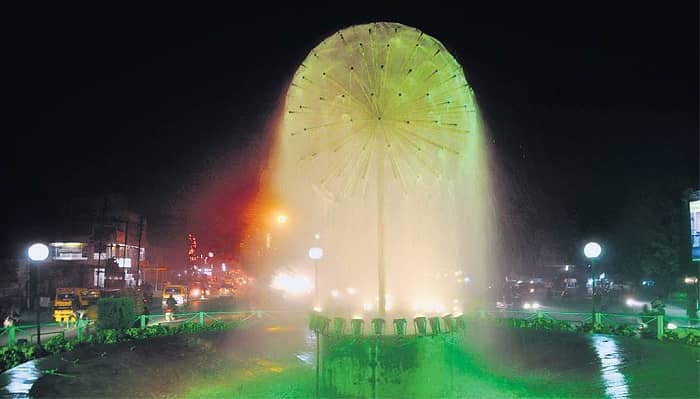
Phool Bagh is located within the premises of the railway station of this city and was built by the Late Madhav Rao Scindia, who died in a plane crash. It is house to a museum and a living palace, alongside some other edifical structures present nearby.
This garden was kicked off and started by the Prince of Wales in 1922 during his tour of this town. The Gwalior Zoo and various places of worship are placed in this garden.
Saas Bahu Temples
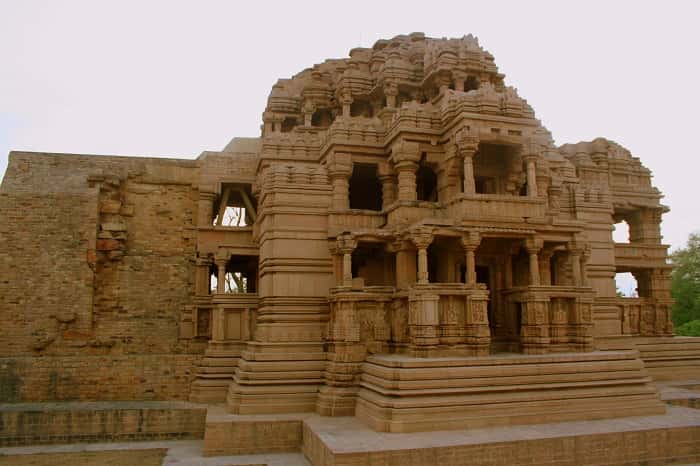
These temples have not been dedicated to and named after mothers-in-law and daughters-in-law, as the names indicate, but the names were given to two side by side and adjoining temples of different sizes.
It is situated close to the easterly partition of the Gwalior Fort and has effigies of Lord Vishnu. The bigger of the two temples is ornamented, embellished and adorned with complicated designs and gorgeous sculptures.
These temples are mainly famous for their statues and moldings. The smaller temple is the exact copy of the bigger one. Both the temples are rich with stone works, holy verses, statues and moldings of various ancient time periods. The palisades of the temples are lifted up on a horizontal level surface.
The temples are store to a stone made and sculpted three-storied structure, which is configured without any curves. The sliced and sculpted pillars and a well give support to this large structure and add to the magic and charm of both these temples.
Haathi Pool
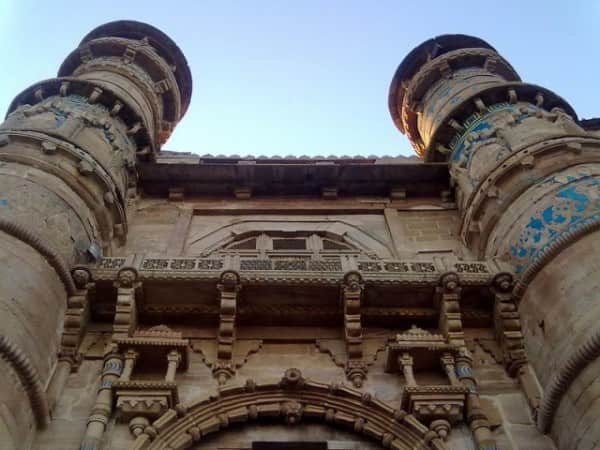
Also known as the Elephant Gate, Haathi Pool is the chief entryway to the Gwalior Fort and provides straightforward access to the Man Mandir Palace. It is the last gate of the fort within the seven other gates, arranged in order.
This gate got its name from the sculpture of a lively elephant made at the entry to the gate in the olden times. It is a big gate and is made up of stones and is positioned in the south east direction of the palace.
The gate comprises of rounded steeples blanketed with furnace ceilings and roofs. Elephants in the olden times could pass through this gate, owing to its large size, and hence is also one of the other reasons for its name.
This gate can be approached only after moving out through six other gates of the fort.
Memorial of Tansen
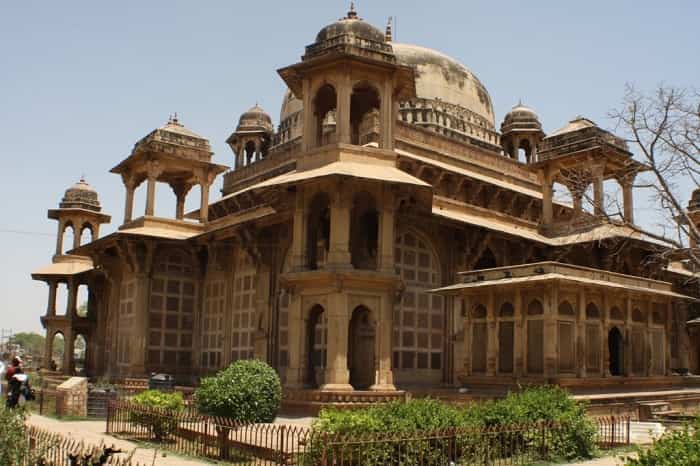
Also known as the Tomb of Tansen, it is situated near and next to the Tomb of Muhammad Ghaus in
the Gwalior Fort. It is enclosed by gardens from all sides.
This memorial was constructed in the memory of Tansen, who was a great musician of the Mughal era. This memorial is famous for hosting a world-famous music festival on a yearly basis.
The tomb follows a typical Mughal sculptural trend and fashion and is designed simply in comparison to the other complex architectural constructions and structures of India.
Already serving the purpose of a fascinating and magnificent monument, it is also a part of the realistic and lively social and ethnical attributes of the city. Many famous singers and musicians of the world perform and enthrall the crowds here.
Samaadhi of Rani Lakshmi Bai
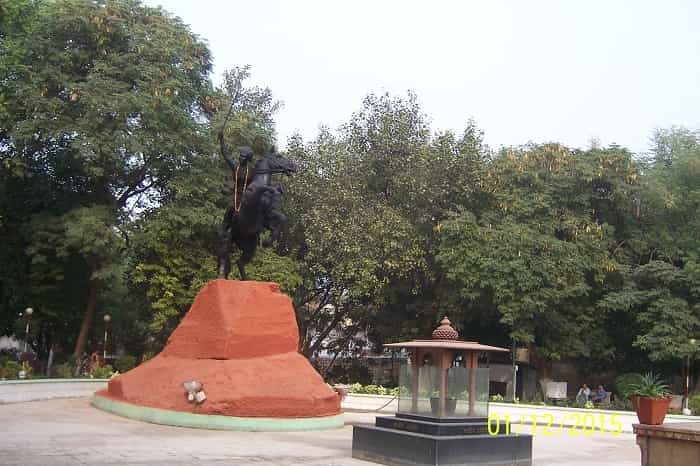
The Samaadhi of Rani Lakshmi Bai is situated in the building structure of Phool Bagh and is a remembrance area of the great Indian queen who led the first war of independence against the Britishers in 1857.
This particular site has a lawn which is store to an eight metalled full-length and gangling statue of the Rani. This magnificent statue was set-up and erected within the lawn in her remembrance and respect.
Scindia Museum
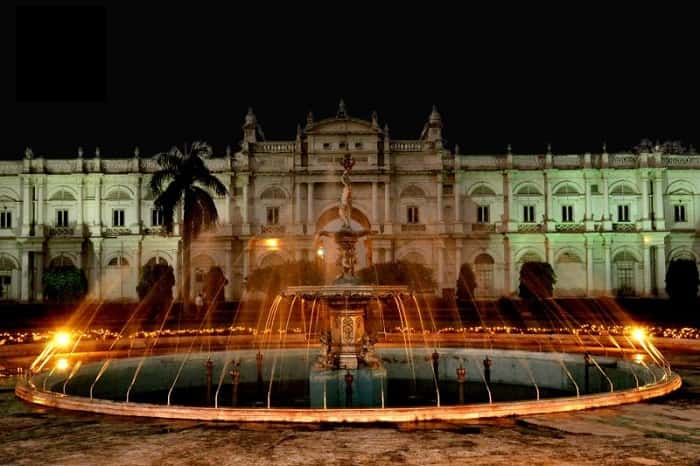
The Scindia Museum is a monumental structure that has been consecrated to one of the rulers of the Scindia dynasty. This specific ruler of the Scindia family was instrumental in causing the building of multiple splendid and magnificent structures within and near Gwalior.
This museum was set up and founded in 1964 and is situated in the interiors of the Jai Vilas Palace. It is managed and administered by an independent trust.
It is famous for its rich compilation of arms and instruments, artifacts, statues, documents, drawings, coins, and other antique pieces. It also displays vitreous silica and quartz glass decorations, artifacts, and some carved glass structures.
Apart from all these, an old automatic metallic train, gold-finished durbar hall, Madurai and Malabar woodwork, and Persian carpets are also seen here. This museum remains open to the public from Tuesdays to Sundays from ten in the mornings to five in the evenings.
Tomb of Muhammad Ghaus
The Tomb of Muhammad Ghaus is situated in the ancient town of Hazira and is one of the last remains of Ghaus Muhammad. It was built in the sixteenth century and is a fine sample and model of Mughal sculptural designs.
The surface covers of this monument were inscribed, engraved and designed by making use of the methods and procedures of perforated and cut stones. The tomb is stored in multiple towers that are concealed with blue slabs.
Its walls also display complex frameworks. All of these express a lot of magic and charm and attract tourists in large numbers.
Dev Kho
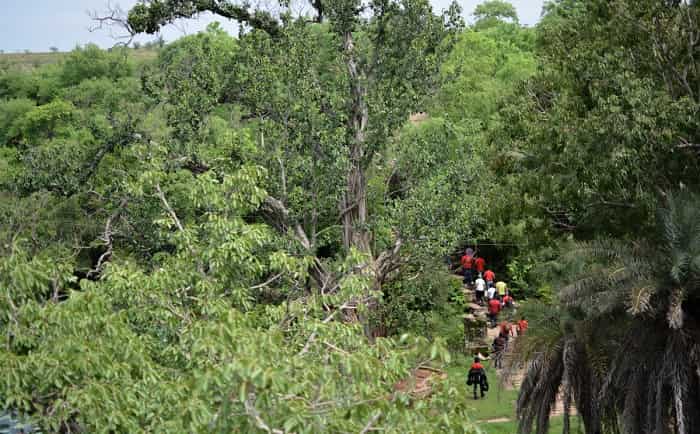
Dev Kho is a natural place that is situated and placed around sixteen kilometers from the city. It is house to many varieties of wild animals and birds and is the perfect location for nature lovers.
It is full of natural beauty and is a perfect picnic and holiday spot. This place is house to a Shiva Temple, which is a hot favorite among the tourists here. This Shiv Temple is located on a knoll and is easily reachable by taxis.
Jai Vilas Mahal
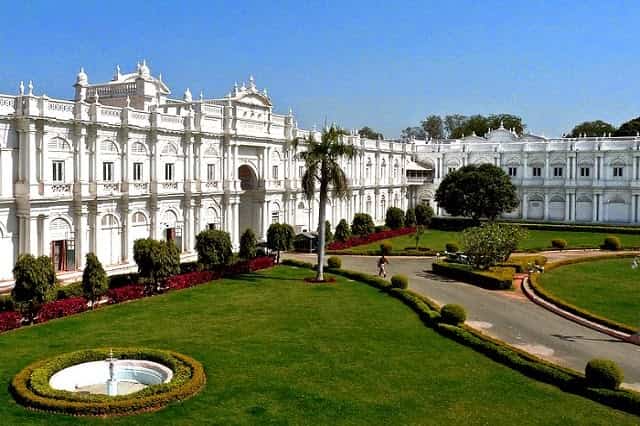
The Jai Vilas Mahal is a large and stunning palace and was built in European style and fashion. It has twenty-five rooms and all of them have been regenerated into a museum. It houses the ancient swords of the Mughal Emperors, Shah Jahan ad Aurangzeb.
Some portions of this palace are filled by the Scindia family members. Jai Vilas Mahal remains open for the public and tourists from Tuesdays to Sundays from ten in the mornings to five in the evenings.
Thus, tourist places in Gwalior comprise of the above mentioned and described spots and monuments, the Gujari Mahal and the Archaeological Museum, the chhatris of Scindia family and some other famous sites of worship.

